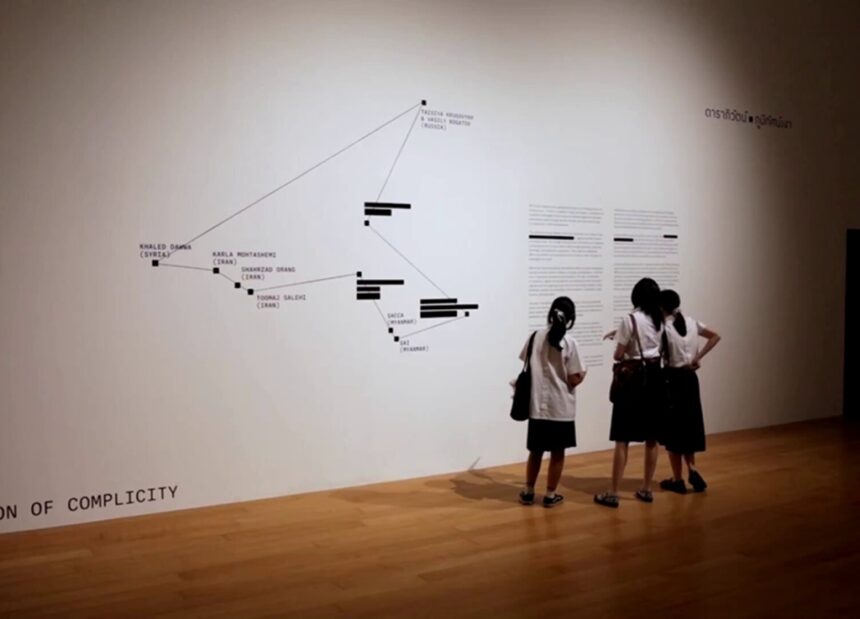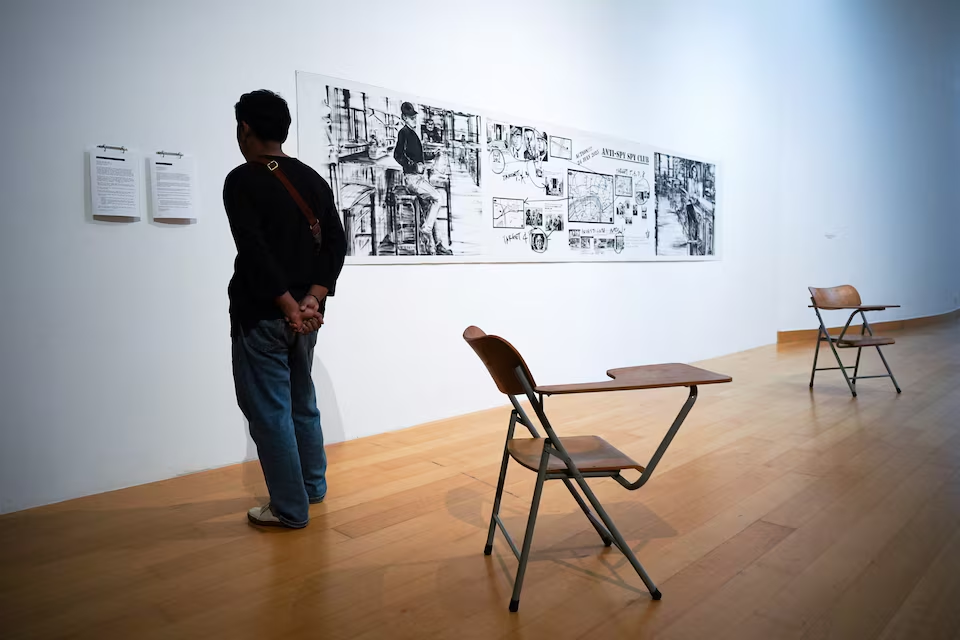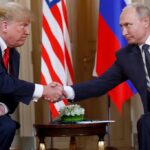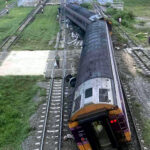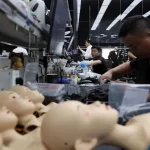BANGKOK – A leading art gallery in Bangkok has taken down exhibits and altered works focused on Beijing’s policies toward ethnic minorities in Hong Kong and Tibet, after a request from Chinese Embassy officials, according to the gallery curator.
The Bangkok Arts and Cultural Centre removed or changed several pieces by artists living in exile. These changes came in an exhibition that highlighted cooperation among authoritarian governments.
When Reuters visited the gallery on Thursday, art previously promoted or pictured was missing. A multimedia piece by a Tibetan artist was gone. Other works showed heavy edits, with words like “Hong Kong”, “Tibet” and “Uyghur” and some artist names blocked out.
Co-curator Sai, a Myanmar artist who uses only one name, said the exhibition, “Constellation of Complicity: Visualising the Global Machinery of Authoritarian Solidarity”, opened on 24 July.
Just three days later, staff from the Chinese embassy and Bangkok city officials arrived, demanding the show be halted.
A gallery email from 30 July, seen by Reuters, explained, “Due to pressure from the Chinese Embassy, passed through the Ministry of Foreign Affairs, we were warned the exhibition could cause diplomatic issues between Thailand and China.”
The gallery said it had to make changes, such as removing artist names from Hong Kong, Tibet and Xinjiang (often called Uyghur artists). Neither China’s embassy in Bangkok, officials in Beijing, nor Thailand’s Foreign Ministry replied to repeated requests for comment.
Bangkok’s city Administration told Reuters to contact the gallery, but the gallery declined to comment. A staff member at the exhibition said the team had agreed not to discuss the subject.
Responding to Pressure
Rights groups say China often tries to silence critics abroad, including in the arts, though Beijing denies these claims. Sai, who helped set up the show with the Myanmar Peace Museum, said that artworks taken down included Tibetan and Uyghur flags, postcards with Chinese President Xi Jinping, and one piece linking China and Israel.
He called the situation “tragically ironic”, as an exhibition about authoritarian collaboration faced censorship under similar pressure. Sai added that Thailand has often sheltered political exiles, but now the message to artists and activists is alarming.
Sai spoke to Reuters from abroad after Thai police reportedly searched for him. Local police said they had not received any complaints about the event.
Earlier this year, Thailand quietly deported 40 Uyghurs, a mostly Muslim group from Xinjiang. The UN had warned they faced possible torture if returned. China rejects claims of mistreatment. The Bangkok exhibition also featured work by exiled artists from Xinjiang, Russia, Iran and Syria.
China continues to grow its influence in Southeast Asia, with countries weighing cooperation and their independence.
Reports in New Zealand media recently mentioned China’s failed attempts to stop screenings of a Philippine documentary about the South China Sea at local film festivals. In the Philippines, the film was pulled in March because of outside pressure, according to its makers.
Blacked Out Screens at the Art Gallery
Chinese officials returned to the Bangkok art gallery on Wednesday, asking for more material to be removed and emphasizing China’s “One China policy”, according to Sai and his contacts.
This policy, observed by countries dealing with Beijing, recognizes the People’s Republic of China as the only legitimate government, including its claim over Taiwan. China has never ruled out using force against Taiwan, though Taiwan insists its people alone will decide their future.
Most foreign governments treat Tibet and Xinjiang as Chinese regions.
Among the works withdrawn was a video by Tibetan artist Tenzin Mingyur Paldron, showing Tibetans holding Palestinian flags and calling for justice over genocide, as well as a film titled “Listen to Indigenous People”.
Images shared by Sai showed that these pieces were displayed earlier.
Paldron commented that by making the gallery remove major parts of her work, China is again trying to cut Tibetans off from global audiences and hide its role in other conflicts.
“Museums should be for the people, not for any political authority,” Paldron said. During Reuters’ visit, video displays showed only a blank screen. A film by a Uyghur artist was played, but her name was erased.




